Have you ever noticed how simple things make a massive impact on our personal health?
This truth resonates loudest when I think about the unsung hero of our daily lives: our mattress. A good mattress cradles us into ever-so-important sleep night after night; plus, it also stands as a testament to our commitment to a sustainable lifestyle.
The general consensus nudges us to replace our mattresses every 6 to 10 years. Yet, as an advocate for thoughtful consumption, I believe this topic deserves a more nuanced discussion. Not all wear and tear are created equal, nor are the environmental impacts of discarding and replacing this bulky item.
I remember the time when I first started my journey towards a sustainable lifestyle. My choices, especially those as significant as buying a mattress, were fraught with questions and considerations. It wasn’t just about comfort or longevity but about understanding the ripple effect of this decision on the environment.
So, let’s delve into this key question together: “How Often Should You Replace Your Mattress?” Join me as we unpack the layers of this decision.
Signs That You Need to Replace Your Mattress
We all know that a mattress is not just a bedroom accessory; it’s our nightly haven for rest. But even the best havens need updating.
Typically, a mattress serves us well for about 6 to 8 years. Remember, though, this is just a ballpark figure. The real signs that you need a new mattress can be quite personal and varied.
Let’s break it down simply. Consider hunting for a new mattress if:
- Your mattress is more than 6-8 years old.
- You toss and turn more than you sleep.
- Your mattress has dips or damage, making it look like a mini rollercoaster.
- The creaks and squeaks from your mattress are giving old floorboards a run for their money.
- You find yourself snoozing blissfully on a different mattress, like in hotels, or at a friend's place, but not in your own bed.
- Sniffles and sneezes increase, especially when you're in bed.
- You wake up tired, feeling like you've run a marathon, with your muscles and joints staging a protest.
In my own journey, I realized it was time for a change when my trusty old mattress started feeling more like a lumpy battlefield than a restful retreat. Waking up should feel refreshing, not like you’ve been in a tussle all night.
If thoughts of a new bed are floating in your mind, it might be your cue to start looking. There’s no magic number or perfect moment, but your comfort and health are excellent indicators. After all, investing in a good night’s sleep is investing in yourself – and that’s always worth it.
Understanding the Lifespan of Different Mattress Types
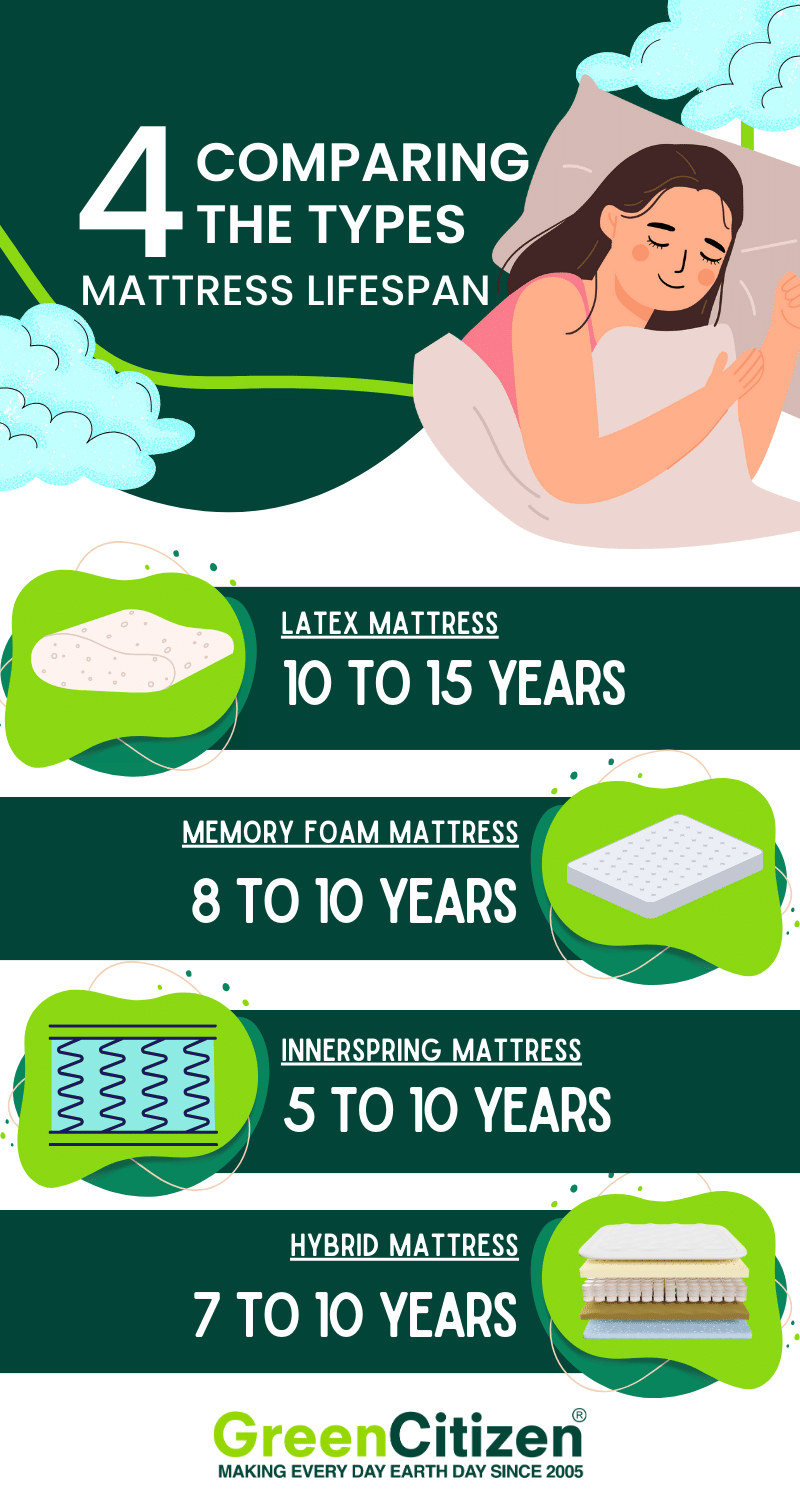
Did you know that not all mattresses are created equal when it comes to their lifespan?
Whether it’s latex, memory foam, innerspring, or hybrid, each type has its own clock ticking. Let’s break it down:
Latex Mattress: The Long-Lasting Comfort
Latex mattresses are the marathon runners in the mattress world. They can keep you comfy for 10 to 15 years, especially if you treat them right.
Made from natural materials like Talalay or Dunlop latex, they’re known for their durability. Plus, they give that extra bounce and keep things cool and comfortable.
Memory Foam Mattress: The Cozy Contourers
Memory foam mattresses are all about hugging your body’s contours. But how long they hug for depends on their quality.
You might get 3 to 5 years out of a lower-quality one, but a top-notch memory foam can stick with you for 8 to 10 years. They come in varieties like classic, gel-infused, or copper-infused, each with its perks. And remember, the denser the foam, the longer it’s likely to last.
Innerspring Mattress: The Bouncy Classics
Innerspring mattresses are the traditional choice, with a lifespan of about 5 to 10 years. They’re all about the springs, whether they’re Bonnell, pocket, offset, or continuous.
The durability game is strong with thicker coils and higher coil counts. Mattresses with thin coils and less than 300 of them might call it quits a bit sooner.
Hybrid Mattress: The Best of Both Worlds
Hybrid mattresses blend the comfort of foam with the support of springs, aiming to give you the best of both. A good one can be your sleep buddy for 7 to 10 years.
But it’s a mix, and the quality of each material matters. For instance, polyfoam is a common find in hybrids. It’s budget-friendly but not the longest-lasting, so the more premium the materials, the longer your hybrid mattress will last.
Choosing the right mattress is like picking a long-term sleep partner. Know their traits, treat them well, and you’ll enjoy countless nights of sweet dreams together!
Factors Affecting the Lifespan of a Mattress
Poor Quality of Sleep

Ever wake up feeling like you’ve wrestled all night? Or notice you’re more aware of your partner’s every toss and turn than before?
These could be your mattress waving a white flag. As time ticks on, the core elements of your mattress that support and cuddle you to sleep can wear down. This wear can lead to those dreaded morning aches or the sensation of a midnight dance party on the other side of the bed.
Here’s the deal: if your mornings start with stiffness or pain that wasn’t there the night before, it’s a clear sign your mattress may be calling it quits. Remember, a mattress is not just a bed but a nightly sanctuary for your body. And if it’s not serving its purpose of providing comfort and support, it might be time to bid it farewell.
But here’s a twist – even if your mattress looks as good as new, it doesn’t mean it’s the right fit for you.
Feeling discomfort or not sleeping well?
It’s a signal worth listening to. We spend almost a third of our life sleeping, so settling for a mattress that’s anything less than perfect doesn’t add up.
The good news?
Finding a comfy replacement doesn’t have to drain your wallet. The online world is full of quality options that are kind to your budget. So, if your mattress isn’t making the grade, it’s okay to start exploring. Your body (and your mornings) will thank you!
Does Your Mattress Have Wear and Tear?
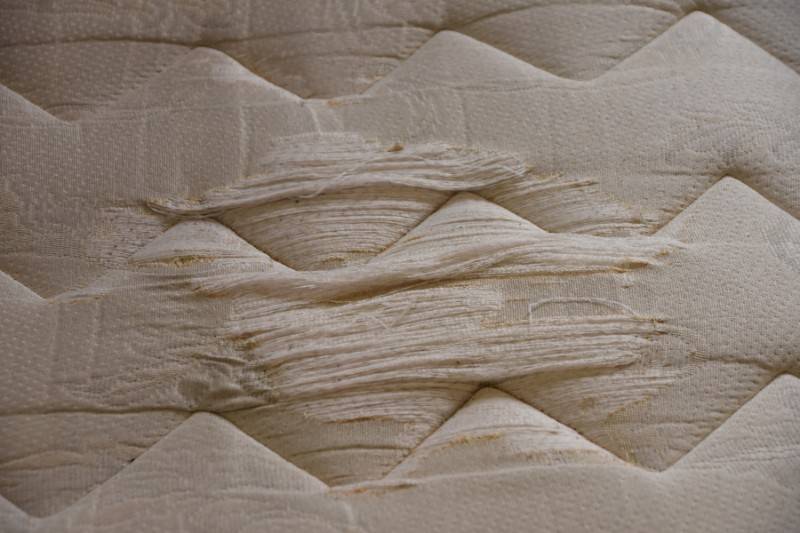
It’s detective time!
Strip your mattress of its sheets, pads, protectors – everything. Now, take a good, hard look. What do you see? Is it more lumpy than your grandma’s mashed potatoes? Are there sad, saggy spots where you and your partner usually lie? Maybe you’ve noticed frays, tears, or even springs making a break for it.
These are your mattress’s SOS signals.
These signs aren’t just about aesthetics; they’re clues that your mattress’s best days are behind it. When the fabric that holds your dreams starts to crumble, your sleep quality is likely taking a hit, too. And let’s face it, a restful night on a saggy, lumpy bed is as rare as a quiet morning in a rooster’s house.
Wondering how often you should play mattress detective?
Here’s a tip: make it a ritual every time you rotate your mattress, which should be about every six to eight months. Rotating helps even out the wear, kind of like giving your mattress a mini vacation. And while you’re at it, give it a thorough check-up. It’s the perfect opportunity to catch any wear and tear early and decide if it’s time for a mattress-shopping adventure.
Changes in Body Weight
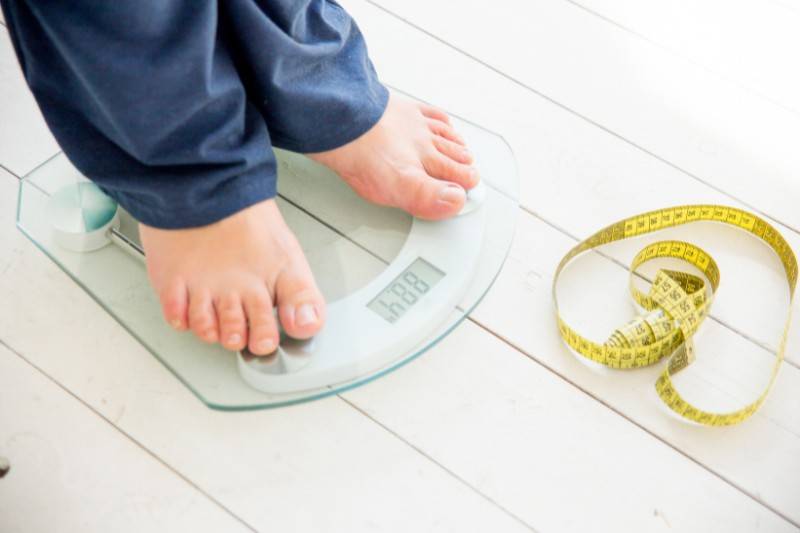
Did you know that changes in your weight can be like a plot twist for your mattress’s story?
It’s true!
Whether you’ve gained a few pounds or shed them, your mattress feels the difference. For someone lighter, a mattress might feel like a firm, supportive cloud. But add more weight, and that same mattress could feel as though it’s not giving the hug your body needs.
Think of it this way: we all fit into different categories when it comes to our weight:
- Lightweight (Under 130 lbs)
- Average Weight (130-250 lbs)
- Heavyweight (Over 250 lbs)
Each category has its own needs in terms of mattress comfort and support. So, if you’ve recently moved from one weight class to another, your old mattress might not be the best fit for you anymore. It’s like wearing shoes that are a size too small – uncomfortable and not ideal for your wellbeing.
If you’re nodding along thinking, “That’s me!” it might just be the right time to start looking for a new mattress. One that matches your current body type and embraces you into a sleep that’s both restful and rejuvenating. Your body’s been through a change; maybe it’s time your mattress did too!
Noisy Springs Is a Telltale Sign
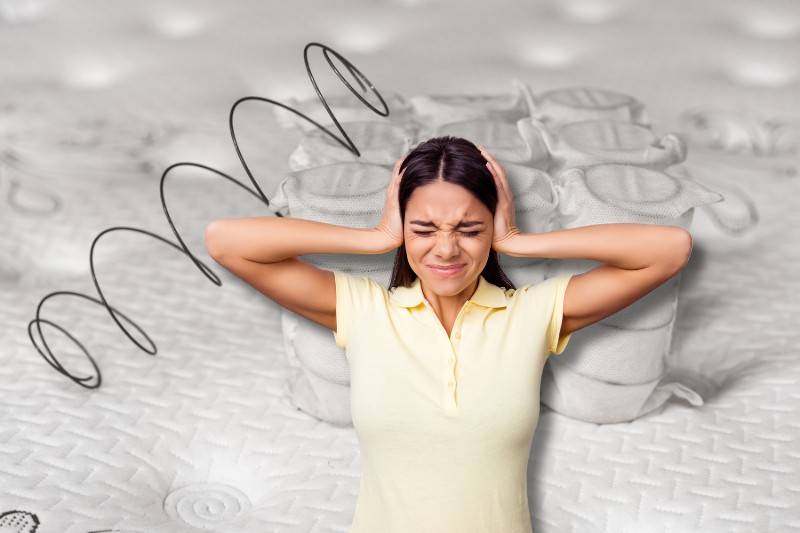
Is your mattress starting to sound like an old, creaky staircase? That symphony of squeaks and creaks might just be your mattress’s way of saying, “I’m tired!”
Innersprings in your mattress are like silent heroes – they’re supposed to support you quietly, offering a cozy cradle for your dreams. But when they start voicing their presence, it’s a sign they’re wearing out.
Think of it this way – if your mattress starts to sound like it’s complaining every time you move, the springs might be waving a white flag. Springs that poke through, sag, or snap are like the mattress waving a distress signal. It’s more than just noise; it’s your mattress telling you it’s not the supportive companion it once was.
And it’s not just about the mattress. If your box spring starts chiming in with its own set of squeaks, it’s also a heads-up. It could mean the whole sleep setup is getting old. Plus, if you’re suddenly aware of every twist and turn your partner makes during the night, it’s a hint – those once-sturdy springs are getting weak.
So, when your mattress starts to sound like a squeaky wheel, it’s probably time to roll it out and welcome a new, silent sleeper into your room.
After all, peaceful and quiet sleep is priceless, isn’t it?
Are You Sleeping Better Away from Home?

Have you noticed that you sleep like a baby when you’re not in your own bed? Maybe at a hotel or even a friend’s guest room mattress, you find yourself sinking into a deep, blissful sleep.
If that’s the case, it might be your own bed sending you a silent message – it’s not doing its job anymore.
It’s a bit like finding comfort in a coffee shop’s cozy corner when your own sofa doesn’t hug you back the way it used to. When you start realizing that your z’s are deeper and your dreams sweeter somewhere else, it’s a pretty clear sign.
Your mattress might just be whispering (or maybe shouting), “It’s time for a change!”
So, if you’re counting more sheep at home than you do anywhere else, it could be time to bid your old mattress farewell. After all, your bed should be the one place where comfort is guaranteed, right?
When sleep feels better elsewhere, it’s your cue to bring that comfort back home.
Allergies and Asthma Concerns

Guess what could be hiding in your mattress, playing hide and seek?
Dust mites! And they’re not the best bedfellows, especially if sneezes and sniffles are not your idea of a good night’s sleep. If you’re noticing your allergies or asthma flaring up more than usual, your mattress might be the secret culprit.
No matter how much of a clean freak you are, your mattress, over time, becomes a magnet for things we’d rather not think about – dead skin cells, body oils, and even the moisture we lose during sleep.
This trio is like a VIP invite for dust mites. And these uninvited guests don’t just crash for the night; they can stay for the long haul.
A study from Ohio State University throws a spotlight on this – revealing that an average mattress can be home to up to a staggering 10 million dust mites!
And it’s not just the mites. When your mattress becomes a sponge for oils and moisture, it can start a party for mold and mildew. Spotted any black dots or caught a whiff of something musty? That’s your mattress sending out an SOS.
So, if you’re waking up to more sneezing or wheezing, it might be time to bid your old mattress goodbye. After all, your bedroom should be a sanctuary for sleep, not a playground for allergens.
Tips to Extend Your Mattress's Lifespan
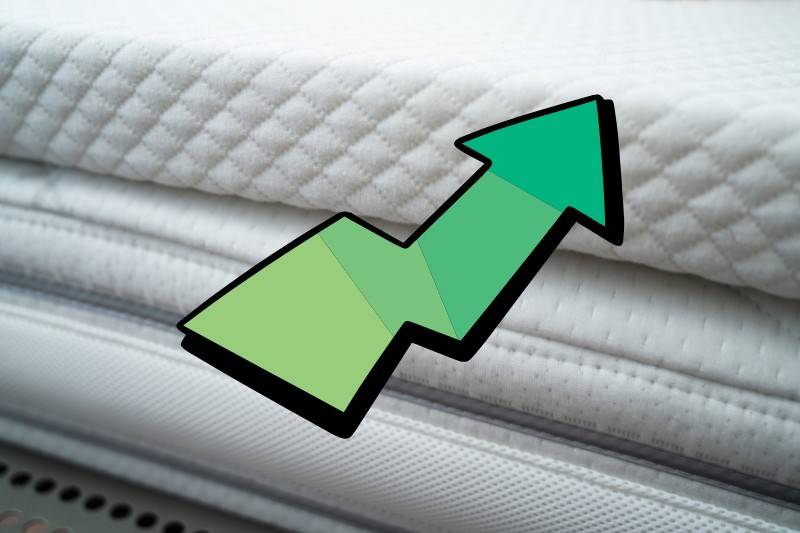
Just like any long-term relationship, the bond with your mattress needs care and attention. Here’s how to make sure your mattress stays in tip-top shape for years to come:
Use a Mattress Protector
Think of a mattress protector as your mattress’s superhero cape. It fits snugly on your bed (right under the sheets) and fends off liquids, dirt, and allergens. And the best part? They’re budget-friendly and work wonders in keeping your mattress fresh and clean.
Choose the Right Foundation
Not all mattresses are the same, and some need the right base to thrive. Whether it’s a box spring or a platform bed, check your mattress’s warranty for guidance. The right foundation isn’t just support; it’s a ticket to a longer mattress life.
Set Boundaries for Your Kids and Pets
Sure, it’s tough to say no to fun, but your bed isn’t a trampoline. Encouraging kids and pets to play elsewhere can save your mattress from wear and tear. Think of it as setting healthy boundaries—for your mattress’s sake!
Tackle Spills Immediately
Spills are like uninvited guests—they’re easier to handle right away. Addressing a spill swiftly can prevent long-term damage, keeping your mattress in better shape for longer.
Clean Your Mattress Regularly
Just like you, your mattress enjoys a good spa day. Aim for a deep clean every six to 12 months. A gentle vacuum session, a spot clean here and there—it’s like a wellness retreat for your bed. While DIY methods are great, peek at your mattress warranty for tailored care tips.
Taking care of your mattress is an investment in your comfort. Follow these tips, and your mattress will be more than just a bed—it’ll be a reliable partner in your journey to dreamland!
Wrapping It Up: Ensuring Your Mattress Lives a Full Life
In our journey to sustainable living, understanding when to replace and how to preserve our mattress is key. It’s not just about our comfort; it’s about making conscious choices for our planet.
Let’s quickly recap the highlights and actions you can take to ensure your mattress lives its fullest life:
- Recognize the Signs: Stay alert to the tell-tale signs of mattress wear, such as discomfort, sagging, or increased allergies. Remember, if your sleep is sweeter away from home, your mattress might be telling you it’s time to part ways.
- Understand Lifespans: Different mattresses have different lifespans. Whether it’s latex, memory foam, innerspring, or hybrid, each has its timeline. Choose one that aligns with your lifestyle and sustainability goals.
- Protect and Preserve: Extend your mattress’s life with a protector, the right foundation, and by keeping it a no-play zone for kids and pets. Spills? Tackle them quickly. And don’t forget regular cleaning sessions.
Making your mattress last isn’t just good for you; it’s a small yet significant step towards a more sustainable lifestyle. By being mindful of these tips, you’re not just securing many nights of restful sleep; you’re also casting a vote for a healthier planet.
Remember, every mattress has its story and lifespan. When it’s time to let go, recycle your mattress responsibly, and welcome a new, eco-friendly option into your home.
Sleep well, knowing you’re making choices that benefit you and our Earth.

